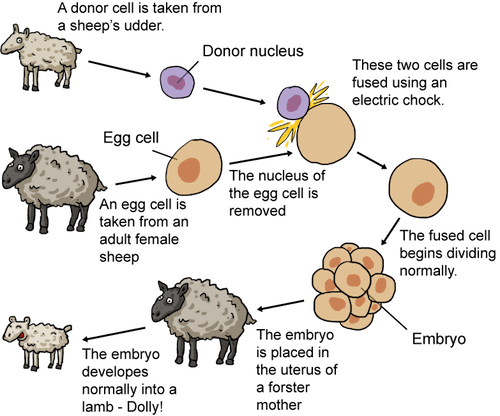| Source: https://bam.files.bbci.co.uk/bam/live/content/zh6gd2p/large |
- A tissue sample is taken from a 'parent plant'
- It is placed in agar containing appropriate nutrients
- They develop into plantlets
- Transferred to compost where they fully develop
This can be advantageous because:
- It allows a farmer to genetically modify one plant and pass on the modification to many thousands of plants
- Plants grow quicker than they would from the seed
- A (natural) desired trait can be 'copied' into hundreds and thousands of other plants
Its disadvantages are:
- Very small gene pool, which means a disease can wipe out all of the plants at once
